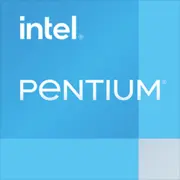Intel Pentium G640

Intel Pentium G640: A Budget Veteran in 2025. Is it Worth Buying?
Key Specifications: Sandy Bridge in the Modern World
The Intel Pentium G640 processor, released in 2011, belongs to the Sandy Bridge architecture—revolutionary for its time but now considered outdated. With a manufacturing process of 32 nm and a TDP of 65 W, it is positioned as a solution for basic tasks.
Key Parameters:
- 2 cores / 2 threads without Hyper-Threading support;
- Base clock frequency of 2.8 GHz (no turbo mode);
- 3 MB of L3 cache;
- Integrated graphics with Intel HD Graphics (6 Execution Units).
Performance according to Geekbench 6:
- Single-Core: 467 points—on par with modern budget Celerons;
- Multi-Core: 736 points—lower than any 4-core processor of the 2020s.
Features for its Time:
- Support for AES-NI instructions for encryption;
- Intel VT-x virtualization technologies;
- Energy efficiency for office PCs.
Compatible Motherboards: The Hunt for Rarities
The Pentium G640 uses the LGA 1155 socket, which is no longer in production. In 2025, finding a new motherboard is impossible—only used options are available.
Compatible Chipsets:
- H61: Basic option without overclocking or USB 3.0;
- B65 / H67: Supports SATA III and more ports;
- Z68 / Z77: Advanced features (like SSD caching).
Selection Tips:
- Check the condition of capacitors on used boards;
- Look for models with USB 3.0 (e.g., ASUS P8H67-M PRO);
- Avoid boards without UEFI—they may have compatibility issues with modern OS.
An example cost for used boards in 2025: $20–$40 (no new analogs available).
Memory Support: Only DDR3
The processor is not compatible with DDR4/DDR5. The maximum capacity is 32 GB DDR3 (2 channels, 1066/1333 MHz).
Recommendations:
- Use 2 modules for dual-channel mode (e.g., 2x8 GB);
- Don’t overpay for frequencies over 1333 MHz—performance gains are minimal;
- Check compatibility with the motherboard (not all boards support 16 GB modules).
Power Supply: Minimum Watts, Maximum Reliability
With a TDP of 65 W, even a low-power PSU will suffice, but consider other components:
- For a system with integrated graphics:
- Minimum: 250 W (e.g., be quiet! SFX Power 2 250W, $45);
- Optimal: 350–400 W (Corsair CX450, $55)—headroom for HDDs and peripherals.
- With a discrete graphics card (e.g., GT 1030):
- 400–500 W (Cooler Master MWE Bronze 500W, $60).
Important! Do not use cheap noname power supplies—failure risk increases.
Pros and Cons: Who Is It Suitable For?
Pros:
- Price: A used processor costs $10–15 (2025);
- Energy Efficiency: Ideal for Always-On PCs (e.g., home server);
- Quiet Operation: A passive cooler is sufficient under load.
Cons:
- Weak Performance: Struggles with a browser open with 20 tabs or 4K video;
- Outdated Platform: No support for NVMe, USB 3.1, Wi-Fi 6;
- Compatibility Risks: Old drivers for Windows 11 may cause errors.
Use Cases: Where is the G640 Still Relevant?
1. Office Tasks:
- Working with documents, Excel, email.
- Example: Setting up a PC for a cashier in a small shop.
2. Entry-Level Multimedia:
- Watching 1080p videos via VLC (4K not supported);
- Limitation: YouTube in 4K will lag even with hardware decoding.
3. Retro Gaming:
- Games up until 2012 (e.g., Half-Life 2, GTA IV on low settings);
- Tip: Add a GTX 750 Ti graphics card (used, $30) for decent FPS.
4. Home Server:
- File storage, VPN, Tor node.
- Benefit: Low power consumption (up to 100 W in total).
Comparison with Competitors: Who Is Better in 2025?
1. AMD Athlon 3000G (2020):
- 2 cores / 4 threads, Vega 3 GPU, DDR4 support.
- Geekbench 6: Single-Core ~600, Multi-Core ~1200.
- New Price: $60 (still available in 2025).
- Conclusion: Better in every aspect except price.
2. Intel Celeron G6900 (2023):
- 2 cores / 2 threads, UHD 710, DDR4/DDR5 support.
- Geekbench 6: Single-Core ~1400, Multi-Core ~2100.
- New Price: $75.
- Conclusion: 3 times faster, but more expensive.
3. Raspberry Pi 5:
- ARM processor, 8 GB RAM, 5 W power consumption.
- Scenario: More cost-effective for server tasks than the old Pentium.
Practical Assembly Tips
1. Basic Configuration:
- Motherboard: ASUS P8H61-M LX3 (used, $25);
- RAM: 2x4 GB DDR3 1333 MHz ($15);
- Storage: Kingston A400 240 GB SSD ($30);
- PSU: 350 W (new, $45).
- Total: ~$125 (excluding case and peripherals).
2. Upgrade Potential:
- Swap to Core i5-2500 (4 cores / 4 threads, used $20);
- Add a low-tier graphics card (GTX 1050, used $50).
3. Mistakes to Avoid:
- Buying DDR3L instead of DDR3 (incompatible);
- Using HDD instead of SSD (system will be slow);
- Installing Windows 11 without checking TPM (a patch may be required).
Final Conclusion: Who Is the Pentium G640 For?
This processor should only be considered in three cases:
1. Ultra-budget Build (up to $150), where every penny counts.
2. Upgrading an Old PC (e.g., replacing a dead Core 2 Duo).
3. Experimental Projects (retro computer, learning assembly).
Do not buy the G640 if:
- You need smooth browsing in Chrome;
- You plan to work with photo/video editing;
- You want a "backup" for the next 5 years.
In 2025, the Pentium G640 is a "workhorse" for very narrow tasks. Its main advantage is price, but even new budget processors (like the Celeron N5105) offer better performance at a comparable system cost. However, it might be an interesting option for nostalgic enthusiasts or specific tasks.
Basic
CPU Specifications
Memory Specifications
GPU Specifications
Miscellaneous
Benchmarks
Compared to Other CPU
Share in social media
Or Link To Us
<a href="https://cputronic.com/cpu/intel-pentium-g640" target="_blank">Intel Pentium G640</a>